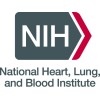
Venous Thromboembolism (VTE) Knowledge
ThromboembolismVenous thromboembolism (VTE) is common especially among post-operative patients, and its occurrence is associated with significant morbidity and mortality. VTE is highly preventable with prophylactic modalities ranging from conservative measures such as early mobilization, to mechanical prophylaxis such as intermittent pneumatic compression (ICP), to pharmacological prophylaxis such as peri-operative anticoagulation. Despite established guidelines from various professional societies, the practice of VTE prophylaxis varied greatly from institute to institute. Evidence suggests that there is a significant gap between the optimal thromboprophylaxis as suggested by experts and real-work practice. Many healthcare-providers (HCP) and patients at risk of VTE are either not aware of the risk of VTE or not confident to apply the necessary thromboprophylaxis. The knowledge level of VTE appears to play a key role in affecting the level of compliance to the optimal thromboprophylaxis. Considerable improvement in VTE prophylaxis utilization may result from the implementation of a multifaceted educational program. By improving patient's awareness on VTE prophylaxis, the incidence of DVT might be reduced. The knowledge level of patients can be improved by various means including educational video, administrative measures, or continue medical education program. However, no prospective study has been performed to assess the impact of an educational program on the VTE knowledge level among post-operative patients and their HCP, and if any improvement of their knowledge level can be translated to a better adherence to VTE prophylaxis guidelines. We therefore propose to conduct a prospective non-randomized controlled study to evaluate the effect of an education materials for the patients as well as their HCP on their knowledge level as well as the utilization and adherence of VTE prophylaxis in these patients by comparing two groups of patients and HCP.

DOCE Study Interaction Between Direct Oral Anticoagulants and Drug-metabolizing Enzyme Inducers...
Atrial FibrillationThromboembolism1 moreAim of the study is to investigate whether the influence of drugs inducing of CYP 3A4 isoenzyme of CYP450 and P-gp transporter significantly affect plasma levels of DOACs in patients with NVAF and venous thromboembolism

Hemostasis and Inflammation in COVID-19 Patients With Venous and Arterial Thrombotic Complications...
Venous Thromboembolismcovid191 moreThe study is aimed at assessing the role of the activity of high-risk markers of thrombotic events (MCP-1, MIP1α, IP-10, phosphatedylserine, calreticulin) on the development of thrombotic complications in patients with COVID -19.

Rivaroxaban as Thrombosis Prophylaxis in Bariatric Surgery
Bariatric SurgeryThe aim of this study is to investigate the efficacy and safety of rivaroxaban in obese patients undergoing bariatric surgery. The objectives are to assess the safety and feasibility of venous thromboembolism (VTE) prophylaxis and lung embolism with Rivaroxaban 10mg as an oral anticoagulant. After bariatric surgery patients receive the study medication Xarelto 10mg QD for 7, resp. 28 days. All clinically thromboembolic events will be assessed by ultrasound or CT, respectively, as soon as apparent. In addition, patients are screened for VTE at day 28 by ultrasound to detect clinically inapparent thromboses. In a subgroup of study patients (patients from the University Hospital Inselspital, Bern) PK/PD parameters are assessed following the last intake of rivaroxaban at day 28.

Using a Real-Time Risk Prediction Model to Predict Pediatric Venous Thromboembolism (VTE) Events...
Venous ThromboembolismPediatrics2 moreThe study will evaluate the effectiveness of a novel, real-time risk prediction model for identifying pediatric patients at risk for developing in-hospital blood clots (or venous thromboembolism [VTE]) based on data easily extracted from the electronic medical record. The study will assess whether using the risk percentages for developing VTE derived from the model increases the number of high-risk patients screened by the pediatric hematology team, which may may lead to an overall reduction in the number of pediatric VTEs seen at Monroe Carell Jr. Children's Hospital at Vanderbilt.

Assessing Feasibility of Thromboprophylaxis With Apixaban in JAK2-positive Myeloproliferative Neoplasm...
Myeloproliferative Neoplasm (MPN)Essential Thrombocythemia (ET)4 moreMyeloproliferative neoplasms (MPNs) are blood disorders that occur when the body makes too many white or red blood cells, or platelets. This overproduction of blood cells in the bone marrow can create problems for blood flow and lead to various symptoms. One of the major problems is the formation of blood clots. These may form in the veins of a patient's legs or arms where they cause leg or arm pain, swelling or difficulty walking. These clots may travel to the lung and then cause chest pain, shortness of breath and sometimes death. Blood clots can also lead to poor or no blood flow to one's heart, brain, or other organs, causing damages that cannot be easily or ever repaired, such as stroke or heart attack. Patients diagnosed with certain types of MPN are associated with a higher risk of developing blood clots and related complications. For this reason, MPN patients are usually treated with low-dose aspirin, a common drug used for blood clot prevention, on long-term basis to prevent the formation of blood clots and other complications. However, recent studies also show that the risk of blood clots remains elevated in MPN patients treated with aspirin, and there may not be improvement or reduction in fatal or other events that are associated with blood clots. In addition, since this medical condition is rare, so there's a lack of studies done with high quality results to help physicians decide the best treatment plan for these patients. The study drug, apixaban, is a new type of orally-taken blood thinner that has been shown to be effective and safe for prevention and treatment of blood clots in various patient populations. The investigators will evaluate whether apixaban is safer and/or better at preventing blood clots and other complications in MPN patients compared to aspirin.

Impact of COVID-19 Vaccines on Cerebrovascular Health
StrokeStroke10 moreSafe and effective severe acute respiratory syndrome coronavirus 2 (SARS-CoV-2) vaccines may reduce the transmission of and achieve population immunity against the COVID-19 pandemic, which accounted for more than 3.75million deaths worldwide. With World Health Organization's (WHO) effort on ensuring equitable access to COVID-19 vaccines, vaccination rate may increase in the near future. On the other hand, vaccination hesitancy has emerged as a major hindrance on the global vaccination campaigns in certain areas due to safety concerns, social factors, and public health policies. For instance, a recent survey conducted in Hong Kong showed a low vaccine acceptance rate of 37%. Long-term safety concerns and post-vaccination events relayed by the social media maybe reasons for vaccination hesitancy. Among which, cerebrovascular accidents (CVA) after vaccination were one of the most frequently reported post-vaccination events. These reports ranged from ischemic strokes in elderly patients with multiple cardiovascular co-morbidities, to hemorrhage strokes in otherwise "young-and-fit" adults. While many of these events were investigated by the COVID-19 immunization expert committee, an important premise to address the apprehension of CVA after vaccination is the provision of evidence-based information of the impact of COVID-19 vaccines on brain health. In this prospective, longitudinal, observational study, we aim to elucidate the relationship between COVID-19 vaccines and cerebrovascular health in healthy citizens in a population-based cohort.

Venous Thromboembolism in Pregnancy Study
Venous ThromboembolismIntrauterine Fetal DeathThe purpose of this study is to investigate clinical, biochemical and genetic risk factors for venous thromboembolism in pregnancy and pregnancy related vascular complications, and the long-term outcome of such complications including implications for quality of life.

Venous Thrombosis Biomarkers in Sickle Cell Disease and Sickle Cell Trait
Sickle Cell DiseaseVenous Thrombosis3 moreBackground: Venous thromboembolism (VTE) includes the abnormal clotting of blood in a deep vein of the upper or lower limbs (deep vein thrombosis) that may travel to and block a blood vessel in the lung (pulmonary embolism). Some people with sickle cell disease (SCD)-a red blood cell disorder-seem to be at greater risk for developing these blood clots. Researchers want to study the blood of people with SCD and VTE as well as healthy people to develop better treatments to prevent blood clots. Objective: To study blood clotting in SCD because it is the most common cause of vascular death after a heart attack or stroke. Eligibility: People ages 18-80 who have SCD (with or without a history of blood clots) or the trait for SCD, and healthy volunteers Design: Participants will be screened with medical history, physical exam, and medical records review. They will give blood samples. Participants will have phone calls either every 3 months or once a year, for 2 years. They will give updates on their health. They may give additional medical records. The phone calls may last up to 30 minutes. If participants have a VTE or pain crisis episode, they may visit the Clinical Center. These visits may last up to 4 hours. They will repeat the screening tests and give blood samples. Some participants may be invited to take part in blood studies. After 2 years, some participants will have a follow-up visit at the Clinical Center. Participation will last for about 2 years.

The China Pulmonary Thromboembolism Registry Study
Pulmonary EmbolismDeep Venous Thrombosis1 moreEpidemiological data on pulmonary embolism (PE) in China needs to be updated and reported. The China Pulmonary Thromboembolism Registry Study (CURES) is designed to provide the cross-sectional spectrum and chronological trends of PE in China, as well as to reveal the intrinsic etiology and pathogenesis of the disease. The CURES is an ongoing large prospective multicenter registry, which was originally initiated in January 2009 via enrolling suspected or confirmed PE or PE with DVT (deep venous thrombosis) patients and assessed their in-hospital outcomes from 100 medical centers in the China PE-DVT network. As of July 2011, in order to determine the PE-relevant short-term outcomes, enrolled participants were followed-up for at least three months in a longitudinal manner. Since August 2016, with the launch and development of precision medicine research scheme in China, the main principle investigators of CURES decided to collect enrolled patients' blood samples with regular follow-ups every three or six months for at least two years (for long-term outcomes). The study protocol has been approved by the China-Japan Friendship Hospital ethics committee, and all collaborating centers received approvals from their local ethics committee. All patients provided written or verbal informed consent to their participation.
